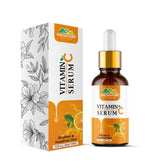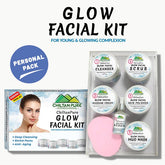Are serums really worth buying?
If you’re looking to increase up your skin care routine with a product that offers a bigger, more powerful dose of active ingredients than a cleanser or moisturizer, a face serum may be the answer.Designed to nourish, protect, and hydrate your skin, a face serum is a great next step after cleansing and before moisturizing.
Let’s get into the benefits of using a face serum and how different kinds of serums can benefit your skin.
 Anti-aging regimens encourage skin renewal and collagen production. According to Palm, this type of serum often includes retinol or bakuchiol, or both.
Anti-aging regimens encourage skin renewal and collagen production. According to Palm, this type of serum often includes retinol or bakuchiol, or both.
 Skin-brightening serums are often chock-full of antioxidants and pigment-fighting ingredients to improve skin tone.Key ingredients might include things such as vitamin C, glycolic acid, kojic acid, ferulic acid, mushroom extract, licorice root, or lactic acid, among others.
Skin-brightening serums are often chock-full of antioxidants and pigment-fighting ingredients to improve skin tone.Key ingredients might include things such as vitamin C, glycolic acid, kojic acid, ferulic acid, mushroom extract, licorice root, or lactic acid, among others.
 Hydrating serums contain hyaluronic acid, a molecule that physically binds water in the skin to make it look fresh, plump, and younger.Kids make lots of hyaluronic acid, and it’s attached to their collagen, but as we age, we lose collagen and lose the attached acidTopical serums with hyaluronic acid can temporarily bind water in the superficial layers of the skin, which can make your skin appear fresher and dewier. It also has the ability to temporarily minimize the appearance of fine lines.Hydrating serums often contain vitamin B5, which helps to hydrate skin, making it appear smoother and more hydrated.
Hydrating serums contain hyaluronic acid, a molecule that physically binds water in the skin to make it look fresh, plump, and younger.Kids make lots of hyaluronic acid, and it’s attached to their collagen, but as we age, we lose collagen and lose the attached acidTopical serums with hyaluronic acid can temporarily bind water in the superficial layers of the skin, which can make your skin appear fresher and dewier. It also has the ability to temporarily minimize the appearance of fine lines.Hydrating serums often contain vitamin B5, which helps to hydrate skin, making it appear smoother and more hydrated.
 Antioxidants fight free radicals that can damage healthy skin.To help prevent skin damage from free radicals, choose a serum that contains ingredients like vitamins C, A, and E, and resveratrol.
Antioxidants fight free radicals that can damage healthy skin.To help prevent skin damage from free radicals, choose a serum that contains ingredients like vitamins C, A, and E, and resveratrol.
 Anti-acne serums often contain salicylic acid or similar plant-based derivatives.Also, look for niacinamide (a form of vitamin B3), which is a soothing, hydrating, and anti-inflammatory ingredient that’s combined with other active ingredients to minimize irritation and soothe sensitive skin.
Anti-acne serums often contain salicylic acid or similar plant-based derivatives.Also, look for niacinamide (a form of vitamin B3), which is a soothing, hydrating, and anti-inflammatory ingredient that’s combined with other active ingredients to minimize irritation and soothe sensitive skin.
 To help boost your skin’s texture and the overall appearance of your skin, it is recommended to use a serum with glycolic acid serum.This sugarcane-derived alpha hydroxy acid can penetrate the top layers of the epidermis to disrupt the intercellular bonds. It can also help shed the dulling, discolored, dead cells to reveal smoother, glowing skin with more uniform texture, tone, and color.
To help boost your skin’s texture and the overall appearance of your skin, it is recommended to use a serum with glycolic acid serum.This sugarcane-derived alpha hydroxy acid can penetrate the top layers of the epidermis to disrupt the intercellular bonds. It can also help shed the dulling, discolored, dead cells to reveal smoother, glowing skin with more uniform texture, tone, and color.
 The best way to use a face serum is as a base layer under your heavier products like moisturizer, sunscreen, and makeup.While younger skin generally doesn’t need much more than a gentle cleanser and daily broad-spectrum sunscreen, it’s helpful to get into a healthy, preventative skin care regimen.Doing so may help prevent discoloration, oxidative damage, dehydration, and premature skin aging and wrinkles.You can use a face serum once or twice a day after cleansing and toning your skin. Think of it as the step after you clean.How often you apply a serum to your skin depends on your goals. The tips below to help you determine when to apply face serum to your skin.
The best way to use a face serum is as a base layer under your heavier products like moisturizer, sunscreen, and makeup.While younger skin generally doesn’t need much more than a gentle cleanser and daily broad-spectrum sunscreen, it’s helpful to get into a healthy, preventative skin care regimen.Doing so may help prevent discoloration, oxidative damage, dehydration, and premature skin aging and wrinkles.You can use a face serum once or twice a day after cleansing and toning your skin. Think of it as the step after you clean.How often you apply a serum to your skin depends on your goals. The tips below to help you determine when to apply face serum to your skin.
What is a serum?
Serums are thin-viscosity topical products that contain concentrated amounts of active ingredients. The concept with a serum is that larger amounts of active molecules will potentially penetrate the skin’s surface for optimum effectiveness. Also, due to the higher concentration, it typically takes a shorter amount of time to see visible results. Many people wonder why they can’t just use a moisturizer or face cream on their skin in place of a serum. While there is no hard and fast rule, suggests using both, and to layer accordingly. Because a serum is lighter and delivers active ingredients to the skin quickly, it goes on first, after you’ve cleansed your skin. But you also need to seal the serum to maximize the benefits, which is why a moisturizer or face cream is the next step. Think of a serum as the secret weapon for treating skin issues like discoloration, dullness, fine lines, or acne — and a moisturizer as the key to hydrating your skin.What are the benefits?
If you use a face serum that’s well suited to the type of issue you want to address, a serum can have numerous benefits. Let’s look more closely at some of the key benefits of adding this product to your skin care routine.Face serum benefits:
- Absorbs quickly into your skin:
- Soothes sensitive skin:
- Improves the appearance of fine lines and wrinkles:
- Protects your skin from free radicals and future damage:
- Has the potential to provide more visible results:
- Feels light on your skin:
Types of face serums and ingredients
When it comes to choosing a skin serum, it’s important to recognize there are different types of serums, as well as specific ingredients to look for based on your goals. In general, face serums fall into the following categories:- anti-aging serums
- skin-brightening serums
- hydrating serums
- free-radical fighting serums
- acne-prone and sensitive skin serums
- reparative/texture improvement serums
Anti-aging serums
 Anti-aging regimens encourage skin renewal and collagen production. According to Palm, this type of serum often includes retinol or bakuchiol, or both.
Anti-aging regimens encourage skin renewal and collagen production. According to Palm, this type of serum often includes retinol or bakuchiol, or both.
Skin-brightening serums
 Skin-brightening serums are often chock-full of antioxidants and pigment-fighting ingredients to improve skin tone.Key ingredients might include things such as vitamin C, glycolic acid, kojic acid, ferulic acid, mushroom extract, licorice root, or lactic acid, among others.
Skin-brightening serums are often chock-full of antioxidants and pigment-fighting ingredients to improve skin tone.Key ingredients might include things such as vitamin C, glycolic acid, kojic acid, ferulic acid, mushroom extract, licorice root, or lactic acid, among others.
Hydrating serums
 Hydrating serums contain hyaluronic acid, a molecule that physically binds water in the skin to make it look fresh, plump, and younger.Kids make lots of hyaluronic acid, and it’s attached to their collagen, but as we age, we lose collagen and lose the attached acidTopical serums with hyaluronic acid can temporarily bind water in the superficial layers of the skin, which can make your skin appear fresher and dewier. It also has the ability to temporarily minimize the appearance of fine lines.Hydrating serums often contain vitamin B5, which helps to hydrate skin, making it appear smoother and more hydrated.
Hydrating serums contain hyaluronic acid, a molecule that physically binds water in the skin to make it look fresh, plump, and younger.Kids make lots of hyaluronic acid, and it’s attached to their collagen, but as we age, we lose collagen and lose the attached acidTopical serums with hyaluronic acid can temporarily bind water in the superficial layers of the skin, which can make your skin appear fresher and dewier. It also has the ability to temporarily minimize the appearance of fine lines.Hydrating serums often contain vitamin B5, which helps to hydrate skin, making it appear smoother and more hydrated.
Free-radical fighting serums
 Antioxidants fight free radicals that can damage healthy skin.To help prevent skin damage from free radicals, choose a serum that contains ingredients like vitamins C, A, and E, and resveratrol.
Antioxidants fight free radicals that can damage healthy skin.To help prevent skin damage from free radicals, choose a serum that contains ingredients like vitamins C, A, and E, and resveratrol.
Acne and sensitive skin serums
 Anti-acne serums often contain salicylic acid or similar plant-based derivatives.Also, look for niacinamide (a form of vitamin B3), which is a soothing, hydrating, and anti-inflammatory ingredient that’s combined with other active ingredients to minimize irritation and soothe sensitive skin.
Anti-acne serums often contain salicylic acid or similar plant-based derivatives.Also, look for niacinamide (a form of vitamin B3), which is a soothing, hydrating, and anti-inflammatory ingredient that’s combined with other active ingredients to minimize irritation and soothe sensitive skin.
Skin texture serums
 To help boost your skin’s texture and the overall appearance of your skin, it is recommended to use a serum with glycolic acid serum.This sugarcane-derived alpha hydroxy acid can penetrate the top layers of the epidermis to disrupt the intercellular bonds. It can also help shed the dulling, discolored, dead cells to reveal smoother, glowing skin with more uniform texture, tone, and color.
To help boost your skin’s texture and the overall appearance of your skin, it is recommended to use a serum with glycolic acid serum.This sugarcane-derived alpha hydroxy acid can penetrate the top layers of the epidermis to disrupt the intercellular bonds. It can also help shed the dulling, discolored, dead cells to reveal smoother, glowing skin with more uniform texture, tone, and color.
How to use a serum
 The best way to use a face serum is as a base layer under your heavier products like moisturizer, sunscreen, and makeup.While younger skin generally doesn’t need much more than a gentle cleanser and daily broad-spectrum sunscreen, it’s helpful to get into a healthy, preventative skin care regimen.Doing so may help prevent discoloration, oxidative damage, dehydration, and premature skin aging and wrinkles.You can use a face serum once or twice a day after cleansing and toning your skin. Think of it as the step after you clean.How often you apply a serum to your skin depends on your goals. The tips below to help you determine when to apply face serum to your skin.
The best way to use a face serum is as a base layer under your heavier products like moisturizer, sunscreen, and makeup.While younger skin generally doesn’t need much more than a gentle cleanser and daily broad-spectrum sunscreen, it’s helpful to get into a healthy, preventative skin care regimen.Doing so may help prevent discoloration, oxidative damage, dehydration, and premature skin aging and wrinkles.You can use a face serum once or twice a day after cleansing and toning your skin. Think of it as the step after you clean.How often you apply a serum to your skin depends on your goals. The tips below to help you determine when to apply face serum to your skin.
Frequency of face serum application
- Anti-pigmentation and antioxidant serums work best when applied in the morning. This helps protect your skin against environmental assaults and free radical production produced by light, including UV and high energy visible light.
- Anti-aging serums are often best suited for nighttime application. This allows the ingredients to work with your body’s circadian rhythm for skin repair and turnover.
- Hydrating serums for drier skin can be applied twice daily to help keep your skin dewy and moisturized.
- Apply skin care products from thinnest to thickest. Most serums work best when applied as the first layer, in direct contact with clean skin after you’ve used a cleanser.
- If the active ingredient is too irritating or drying, you can apply it over another product to create a buffering effect.
The bottom line
Face serums are lightweight products that contain a high concentration of active ingredients. They absorb quickly into your skin, making them an excellent next step after cleansing.There are many different types of serums, each with a unique purpose and ingredients. Some serums help to brighten your skin or reduce blemishes, while others focus on boosting hydration or fighting the signs of aging.Some serums work better in the morning, while others work best when applied in the evening. If you’re not sure if a face serum is right for you, or which type to use for your skin, talk to a board-certified dermatologist for more information.
Tags:




![Red Onion Oil 🧅 Reduces Hair Fall & Accelerates Hair Regrowth [پیاز کا تیل].. Trending.... 🔥 - ChiltanPure](http://chiltanpure.com/cdn/shop/products/red-onion-oil-reduces-hair-fall-amp-accelerates-hair-regrowth-piaz-ka-til-trending-394813_165x.jpg?v=1707464619)
![Red Onion Oil 🧅 Reduces Hair Fall & Accelerates Hair Regrowth [پیاز کا تیل].. Trending.... 🔥 - ChiltanPure](http://chiltanpure.com/cdn/shop/products/red-onion-oil-reduces-hair-fall-amp-accelerates-hair-regrowth-piaz-ka-til-trending-329640_165x.jpg?v=1708127491)















Leave a comment
Please note, comments need to be approved before they are published.